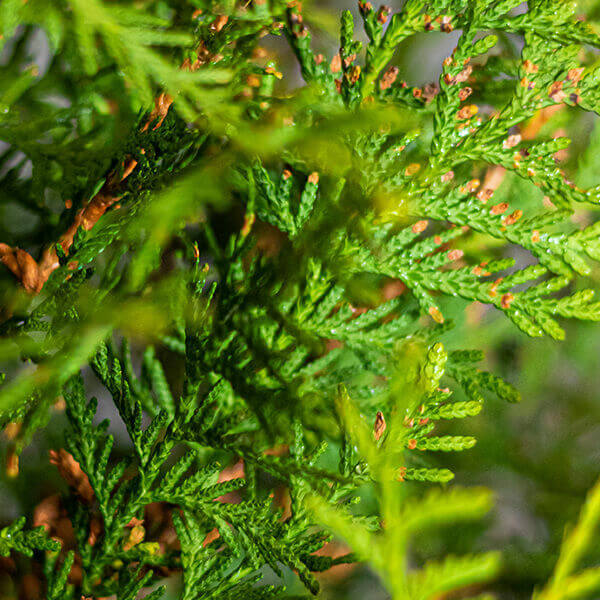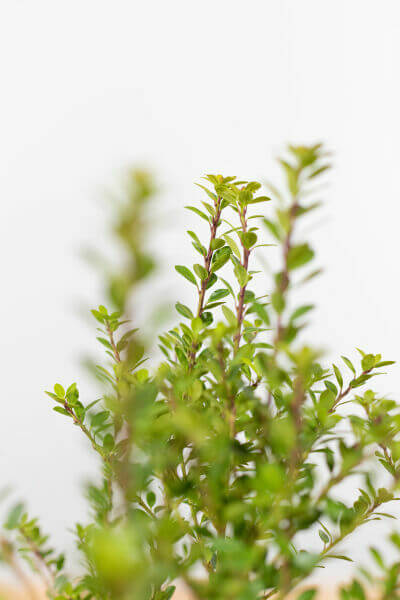Best Hedging Plants For Garden Layout
Best Hedging Plants For Garden Layout
Blog Article
Hedging Plants For Clay Soil
Improve your garden's attraction with lavish hedge ranges such as Yew (Taxus), Thuja, Laurel, Photinia, and Bamboo, celebrated for their structural integrity and ecological advantages.
Yew and Thuja supply evergreen coverage and winter strength, while Laurel offers fast development and broad, fragrant leaves.
Photinia includes seasonal beauty with its vibrant red foliage, and Bamboo provides a low-maintenance, tranquil ambiance.
These hedges enhance air quality, reduce noise, and produce tranquil, personal spaces.
Appropriate planting, spacing, and upkeep make sure energetic growth and environmental harmony.
Check out how these lavish varieties can elevate your garden's appeal and wellness.
Secret Takeaways
Transform Your Garden With Lush Hedge Varieties
- Select Yew for its thick, evergreen development and unrivaled longevity.
- Select Laurel for its quick development and broad leaves, ensuring quick personal privacy.
- Pick Photinia for its vibrant seasonal foliage, which turns a striking dark red.
- Utilize Bamboo for a low-maintenance, winter-hardy hedge with aesthetic appeal.
- Space plants 2-3 per meter and prune routinely for ideal development and health.
Popular Hedge Plants
When changing a garden with lavish hedge ranges, it's important to think about popular hedge plants such as Yew, Thuja, Laurel, and Photinia due to their special characteristics and benefits.
Yew (Taxus) is extremely respected for its durability and thick, green development, making it a prime option for sustaining landscapes.
Thuja is kept in mind for its evergreen foliage and robust winter season strength.
Photinia includes seasonal vibrancy with red leaves that darken with time, developing vibrant visual appeal.
Laurel uses quick development and fragrant, broad leaves, suitable for quick privacy.
In Addition, Bamboo is an excellent option for atmosphere, using a low-maintenance, winter-hardy alternative that improves the garden's aesthetic with its stylish, swaying canes.
These choices deal with a range of horticultural needs and preferences.
Advantages of Garden Hedges
Garden hedges provide a wide variety of benefits, making them a valuable addition to any landscape. These natural barriers are cost-efficient to carry out and offer significant wind defense, improving air circulation and adding to noise reduction. The dense foliage of hedges like Thuja and Beech guarantees privacy by blocking exposure, creating a tranquil and secluded environment.
Hedges also play a vital function in microclimate regulation, offering a stable environment that promotes plant growth and decreases temperature variations. Their elaborate leaf structures filter pollutants, improving air quality and adding to a healthier garden environment.
Furthermore, hedges master noise decrease, absorbing and deflecting acoustic waves to lower ambient noise levels. This dual performance of providing both acoustic and visual personal privacy enhances the general tranquility and visual appeal of any garden.
Planting and Upkeep Tips
For an effective hedge, precise preparation of the planting area is crucial. Make sure the soil has correct pH and drain to support strong root development.
Space the plants appropriately for the picked types. Water the hedge often during its preliminary development stage, changing as needed with seasonal changes.
Implement a systematic pest control and disease avoidance strategy, using chemical or organic treatments when needed. Frequently check for aphids, termites, and fungal infections.
Apply mulch to maintain wetness and suppress weeds. Seasonal pruning promotes thick growth and air flow, essential for plant health.
Following these standards will assist you cultivate a vibrant, well-kept hedge that boosts the appeal of your garden.
Spacing and Trimming Standards
Spacing and Cutting Guidelines
Appropriate spacing and cutting are important for cultivating healthy, visually appealing hedges. Sufficient spacing ensures each plant receives enough nutrients, light, and air flow.
Follow these guidelines for optimal hedge maintenance:
- Spacing: Position hedge plants 2-3 plants per meter to encourage robust growth.
- Pruning Methods: Routine pruning is necessary for keeping wanted hedge height and shape. Cut brand-new growth in summer and cut back older wood during winter season.
- Seasonal Care: Adjust cutting schedules and techniques according to seasonal requirements to ensure plant health.
- Hedge Height: Frequently monitor and trim to keep the wanted hedge height and achieve uniform aesthetics.
Abiding by these steps will ensure your hedge thrives, enhancing both the appeal and performance of your garden.
Picking the Right Hedge
Selecting the Right Hedge
Selecting the proper hedge includes evaluating factors such as fully grown height, foliage density, and environmental resilience. Effective website hedge plant choice requires comprehending each types' growth attributes and site-specific versatility.
For example, Yew (Taxus) offers excellent durability and dense development, while Thuja is notable for its winter durability. Additionally, thinking about upkeep requirements is important; fast-growing species like Laurel or Privet demand routine trimming, whereas low-maintenance alternatives like Bamboo or Ivy might be more effective for those looking for minimal maintenance.
Environmental aspects such as soil type, light accessibility, and moisture conditions must also direct the choice process. This cautious method guarantees the picked hedges will flourish, supplying both practical and visual advantages to the garden landscape.
Delivery and Planting Recommendations
To guarantee your hedge plants flourish, they need to be delivered by specialized couriers and planted without delay upon arrival.
Follow these essential steps for effective planting:
- Soil Preparation: Improve the soil with organic matter to improve drain and nutrient material.
- Planting Depth: Create a trench twice the width and equal to the depth of the root ball.
- Watering Methods: Water completely after planting, keeping the soil regularly wet but not saturated.
- Mulching: Use a layer of mulch to keep wetness and reduce weeds.
Consumer Support and Service
Offered the crucial role of timely support in horticultural pursuits, our client assistance group is readily available 6 days a week through telephone, e-mail, and social media to offer expert guidance and quickly attend to any issues. Their devotion to fast action times makes sure consumer satisfaction by dealing with inquiries associated with plant health, ideal planting techniques, and maintenance schedules.

Telephone
Within 48 hours
This extensive support group, enhanced by an excellent 9.3/ 10 customer rating, highlights our commitment to improving the gardening experience for each customer.
Regularly Asked Concerns
The Length Of Time Does It Consider Hedge Plants to Develop?
Hedge plants generally require one to 3 years to end up being totally developed, with the precise period differing by types and growing conditions.
Reliable care throughout this vital duration is vital for robust growth. Consistent watering, watchful weed control, and appropriate fertilizer application are pivotal in promoting strong root development.
For instance, fast-growing types like Laurel might develop more quickly, while slower-growing varieties such as Yew might take longer. Persistent maintenance accelerates the establishment procedure, leading to dense and healthy hedges.
What Are the very best Hedge Plants for Personal Privacy?
The concern of the very best hedge plants for privacy involves evaluating evergreen and deciduous options.
Evergreen hedges like Thuja, Laurel, and Cypress provide year-round protection, guaranteeing continuous privacy.
On the other hand, deciduous hedges such as Beech provide seasonal privacy, shedding leaves in cooler months.
Secret maintenance tips for personal privacy hedges include regular cutting, fertilizing in spring, and appropriate spacing-- typically 2 to 3 plants per meter.
In addition, consistent watering and diligent weed elimination are essential for promoting healthy, thick growth.
Can Hedge Plants Bring In Wildlife to My Garden?
Yes, hedge plants can draw in wildlife to your garden by providing necessary benefits like shelter, food, and nesting websites, thus boosting local biodiversity. For example, yew, holly, and laurel are exceptional for attracting birds, while ivy supports a range of insects.
However, it is necessary to note that there are some downsides, such as increased maintenance to handle bugs and regular maintenance. Thoroughly choosing and keeping hedge varieties can help stabilize these downsides and benefits, ultimately fostering a sustainable and dynamic environment in your garden.
Are There Any Flowering Hedge Plants Available?
Yes, there are flowering hedge plants offered that can boost the beauty of your garden.
For example, Elaeagnus, also referred to as Olive Willow, produces aromatic white flowers in the fall, adding a touch of beauty.
Photinia, another popular option, showcases lively red leaves that mature into a rich green, creating a dynamic visual impact throughout the seasons.
To make sure these plants thrive, it's necessary to practice appropriate pruning methods and seasonal upkeep, such as cutting brand-new development in the summer season and cutting back in the winter season.
These procedures will assist keep the health and aesthetic appeal of your flowering hedges.
How Do I Prevent Pests in My Hedge Plants?
To prevent pests in hedge plants, employ natural bug control methods and maintain proper hedge care. Introduce advantageous bugs like ladybugs, which take advantage of hazardous insects, to produce a balanced community.
Routinely check your hedges for indications of problem and without delay get rid of any afflicted parts to prevent the spread. Guarantee the health of your hedges by applying balanced fertilizers and supplying appropriate water.
Make use of mulching to keep soil moisture and proper spacing to reduce plant tension and promote robust development. These practices collectively help in minimizing pest issues and keeping a healthy hedge.
Conclusion
In essence, picking the best hedge varieties such as Yew, Thuja, and Laurel can change any garden into a relaxing haven. These plants provide year-round plant, improve aesthetic appeal, and deal practical benefits like sound reduction and wind protection.
Correct planting methods, precise spacing, constant watering, and seasonal cutting are essential for optimum growth.
Reputable delivery services and skilled client support make sure a seamless experience from purchase to planting, making it easier than ever to elevate your outside space.
Garden hedges offer a plethora of benefits, making them an important addition to any landscape. These natural barriers are economical to implement and offer significant wind security, enhancing air blood circulation and contributing to noise decrease. The dense foliage of hedges like Thuja and Beech makes sure privacy by blocking visibility, producing a serene and secluded environment.

Pruning Techniques: Routine pruning is necessary for keeping wanted hedge height and shape. Cut new growth in summer and cut back older wood throughout winter season.
Report this page